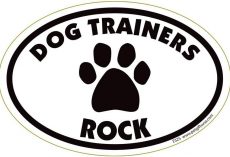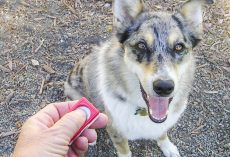Whether you’ve just welcomed a senior pup into your home or finally decided it’s time to introduce your longtime companion to a crate, good news: it’s never too late. Dogs of any age — puppies, adults and seniors — can learn to love their crate with patience and positive experiences.
Here’s your guide to crate training an older dog gently, safely and effectively.
Can You Crate Train an Older Dog?
Absolutely. Older dogs can learn new routines — they just may need a little extra time and reassurance.
Many adult and senior dogs are set in their habits, so adjusting to a crate might feel strange at first. If they’ve never stepped into one before, the small space can feel intimidating. Your job is to help them see the crate as a cozy, comforting retreat — never a punishment.
The secret to success?
Move slowly, pair the crate with good things and follow your dog’s pace.
Why Crate Train an Adult or Senior Dog?
Even in their golden years, dogs benefit enormously from knowing they have a safe space of their own. Crate training can help with:
Stressful moments
Dinner parties, fireworks, holidays or unfamiliar guests can be overwhelming. A crate gives your dog a quiet place to decompress.
Medical recovery
If your dog ever needs surgery or gets injured, being crate trained helps keep him rested and safe while he heals.
Travel safety
Crates keep dogs secure in the car and help prevent distractions. In case of collisions, crates often offer additional protection.
Emergency preparedness
During natural disasters or evacuations, shelters typically require pets to be crated. A dog who already feels safe in a crate transitions much more easily.
How Long Is Too Long in the Crate?
Adult dogs shouldn’t be crated for more than four hours at a time, ideally much less unless they choose to rest there on their own. Long confinement can cause physical discomfort and stress.
How To Crate Train an Older Dog: Step-by-Step
1. Choose the right crate
Your dog should be able to stand up, turn around and lie down comfortably. Make it inviting by adding a soft bed, mat or blanket.
- Consider a plush donut bed
- Or a cushy crate mat for extra comfort
2. Put the crate where life happens
Place it in a room where you typically spend time (like the kitchen or living room). Keep the door open so your dog can sniff, explore and get familiar with it.
3. Build positive associations
Help your dog see the crate as a place where good things happen.
- Feed meals inside the crate
- Toss in favorite toys
- Leave chews or treats inside with the door propped open
- Let your dog wander in and out freely
4. Try the “treat temptation” trick
Put a few treats inside the crate and close the door while your dog is outside. This boosts curiosity and increases their desire to go in.
When you open the door and your dog steps inside, reward generously.
Repeat until they walk in eagerly.
5. Begin closing the crate door
Once your dog is comfortable inside:
- Close the door slightly while giving treats
- If your dog becomes nervous or tries to exit, open the door immediately
- If they stay calm, gradually increase the duration the door remains closed
Always keep the experience positive and stress-free.
6. Add distance gradually
Place a long-lasting chew in the crate, close the door and take a couple of steps away. Watch closely:
- If your dog looks relaxed, return to drop a treat
- Slowly add more steps and more time
- If your dog becomes anxious, go back a step and make it easier
Continue practicing in small increments until your dog feels confident staying inside.
Slow and Steady Wins the Race
With patience, encouragement and lots of tasty rewards, your older dog will grow to see his crate as a cozy, comforting space.
Stick with the process, keep sessions short and enjoyable — and before long, you’ll both be celebrating your new crate-training success! 🐾
We independently pick all the products we recommend because we love them and think you will too. If you buy a product from a link on our site, we may earn a commission.











